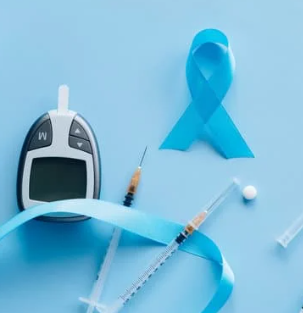Part 2 - Optimizing DRVS Post-Implementation: Strategies for a Seamless Transition
In Part 1 of the blog series, we explored the foundational steps of preparing for a successful EHR re-implementation with Azara DRVS, including assessing system limitations, involving key stakeholders, developing a data integration strategy, training users, and leveraging DRVS during migration. Now, let’s dive into the next steps: implementing DRVS, optimizing performance, and ensuring long-term success.
1. The DRVS Re-Implementation
After the effort of re-implementing a new EHR, Azara strives to make the re-implementation of DRVS (ACC and/or ACU) as simple and comprehensive as possible. Chances are, the core team for the re-implementation has already done the prep work needed to make this a smooth transition, and they are already experts in DRVS. The organization's practice project manager should work closely with their Azara project manager to determine what re-implementation “style” works best for their organization.
Key Questions:
- What key workflows should be the focus of the re-implementation?
- What are the DRVS add-on modules being re-implemented?
- What other data sources should be considered? (plan data, HIE data, etc.)
- Are there events that will affect the implementation timeline?
2. Communicate Change Effectively
Clear communication with all stakeholders is key during the re-implementation process. Create a communication plan that outlines key milestones, timelines, and any expected downtime or disruptions. Keeping everyone informed helps ensure a smoother transition.
Key Questions:
- What information should be communicated to DRVS users prior to the EHR migration, specifically around the Patient Visit Planning Report (PVP) and information available to them?
- What are the benefits of the migration? Shorter latency? More data?
- What is the objective of each piece of communication? Beware of information overload and focus on the key pieces of information the team needs to understand to enhance the quality of the re-implementation.
- How and when will the communication happen? A combination of webinar, email and in-person meetings can be very effective, especially if there are new staff who were not part of the original DRVS implementation.
Clear communication with all stakeholders is key during the re-implementation process. Create a communication plan that outlines key milestones, timelines, and any expected downtime or disruptions. Keeping everyone informed helps ensure a smoother transition.
3. Monitor and Optimize Post-Implementation
Once DRVS has been re-Implemented, continuous monitoring is necessary to identify any issues, improve system performance, and fine-tune workflows. Solicit feedback from users regularly to gauge the system’s impact on care delivery and address any problems that may arise. Working with Azara’s Clinical Transformation team through training and adoption will help the team to maximize the use and actionability of the information in DRVS. Don’t cut corners on training just because your team has been using DRVS for years. DRVS has evolved and has many new capabilities. A re-implementation is the perfect time to take advantage of Azara's training resources.
Key Questions:
- What is the current latency between the EHR and DRVS? What will it be with the new EHR? Will you need an intraday connector set up to pull in patients and appointments mid-day?
- What are the current training needs? Oftentimes practices will use training time to focus on a particular area of DRVS, more complex dashboards, or onboarding DRVS with a new location, etc. Resist the temptation to skip training on a re-implementation. Yes, you may have been users of DRVS for a while now, but there are always new things to learn!
4. Prepare for Long-Term Maintenance
Data hygiene with your EHR and DRVS platform is important to maintaining a high level of data quality. Regular maintenance is critical to ensure that the systems remain up-to-date, secure, and fully functional. During the adoption phase, the practice will work with the Clinical Transformation team and Support to further refine workflows, learn advanced techniques for viewing the data in DRVS and further the use of the use of the PVP.
Key Questions:
- Who will monitor the changes in EHR workflows? Once a workflow change has been made, it is best practice to contact the Azara Support team to ensure the new workflow is available in DRVS.
- Who will monitor the unmapped data in DRVS? While Azara has various AI and Machine Learning functionality, the quality team at the practice should regularly review the data health dashboards and unmapped data elements.
5. Change is Inevitable
The change to a new EHR will happen eventually. The aim is to partner together to not only make the re-implementation smooth but increase the amount of robust data that is available to practices and other stakeholders (i.e. health plans) who consume this data. Be on the lookout early for other changes to DRVS data sources and discuss the options to incorporate this data into DRVS with your Client Success Manager.
Key Questions:
- Are there dental systems that will be added?
- Would HIE data be a useful addition to the EHR data in DRVS?
- Are there additional health plans the practice is contracting with? Should that data be available in DRVS?
Re-implementing an EHR system with Azara DRVS is a complex yet valuable process that requires careful planning, stakeholder engagement, and a focus on both short-term transitions and long-term success. By prioritizing data integration, workflow optimization, and effective training, organizations can minimize disruptions and be well on their way to a smooth migration.
Ongoing collaboration with your Azara Client Success Manager will help optimize performance and maximize the benefits of your new system. Please reach out to your CSM early in the process to discuss all options. Questions? Open a support ticket at support@azarahealthcare.com.
Related Articles

Value-Based Care Foundations Part 2: A New Chapter in Risk Adjustment
Explore Insights
Socioeconomic Status, Access, and Control: Rethinking Diabetes Outcomes
Explore Insights
